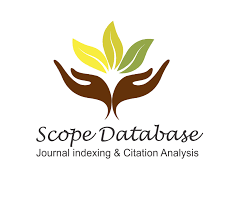Details
Realizing the Potential of AI in Construction Delay Analysis: An Examination of the Issues and Improvement Needs in Delay Analysis Techniques at SMDC Projects
Darwin L. Uy
Student, Master of Engineering Management, Graduate School, Nueva Ecija University of Science & Technology (NEUST), Cabanatuan, Nueva Ecija, Philippines
Noel T. Florencondia
Professor, Master of Engineering Management, Graduate School, Nueva Ecija University of Science & Technology (NEUST), Cabanatuan, Nueva Ecija, Philippines
Download PDF http://doi.org/10.37648/ijrst.v15i02.003
http://doi.org/10.37648/ijrst.v15i02.003
Abstract
This research investigates the potential of Artificial Intelligence (AI) to improve delay analysis techniques within the construction industry, specifically focusing on SM Development Corporation (SMDC) projects. The study aims to identify the limitations of traditional delay analysis methods (Balli & Güven, 2022) and explore how AI can address these shortcomings to enhance project outcomes (Egwim et al., 2021).
Keywords: Causes of Delay; Delay Analysis Techniques; Artificial Intelligence; Machine Learning; SM Development Corporation; Project Management
References
- Abioye, S., Oyedele, L. O., Akanbi, L., Ajayi, A., Delgado, J. M. D., Bilal, M., Akinadé, O. O., & Ahmed, A. (2021). Artificial intelligence in the construction industry: A review of present status, opportunities and future challenges. Journal of Building Engineering, 44, 103299. Elsevier BV. https://doi.org/10.1016/j.jobe.2021.103299
- Al-Gahtani, K. S., & Mohan, S. (2011). Delay analysis techniques comparison. Journal of Civil Engineering and Architecture, 5(8). https://doi.org/10.17265/1934-7359/2011.08.008
- Almén, I. (2024). Usage of AI in preventing delay within construction management.
- Alnaas, K. A. A., Khall, A. H. H., & Nassar, G. E. (2014). Guideline for preparing comprehensive extension of time (EoT) claim. HBRC Journal, 10(3), 308–316. https://doi.org/10.1016/j.hbrcj.2014.01.005
- Arun, A. (2013). Statistical methods for construction delay analysis. IOSR Journal of Mechanical and Civil Engineering, 9(2), 58–62. https://doi.org/10.9790/1684-0925862
- Assaf, S. A., & Al-Hejji, S. (2006). Causes of delay in large construction projects. International Journal of Project Management, 24(4), 349–357. https://doi.org/10.1016/j.ijproman.2005.11.010
- Balli, O., & Güven, İ. (2022). Comparison of artificial intelligence approaches used for construction project delay.
- Boyacioglu, S. E., Greenwood, D., Rogage, K., Gledson, B., Parry, A., & Hinds, M. (2022). Developing an improved process model for forensic analysis of construction project delays.
- Braimah, N. (2013). Construction delay analysis techniques—A review of application issues and improvement needs. Buildings, 3(3), 506–531. https://doi.org/10.3390/buildings3030506
- Dinakar, A. (2014). Delay analysis in construction project. International Journal of Emerging Technology and Advanced Engineering, 4(5), 225–230. http://ijetae.com/files/Volume4Issue5/IJETAE_0514_119.pdf
- Egwim, C. N., Alaka, H., Demir, E., Balogun, H., Olu-Ajayi, R., Sulaimon, I., Wusu, G., Yusuf, W., & Adegoke, M. (2023). Artificial intelligence in the construction industry: A systematic review of the entire construction value chain lifecycle. Energies, 17(1), 182. https://doi.org/10.3390/en17010182
- Egwim, C. N., Alaka, H., Toriola-Coker, L. O., Balogun, H., & Sunmola, F. (2021). Applied artificial intelligence for predicting construction projects delay. Machine Learning with Applications, 6, 100166. https://doi.org/10.1016/j.mlwa.2021.100166
- Espiritu, P. G. G., Manzon, R. D., & Florencondia, N. (2023). Digital transformation adoption in the local government unit (LGU) of the Science City of Muñoz, Nueva Ecija: The challenges and best practices. The QUEST, 2(3). Nueva Ecija University of Science and Technology, Graduate School.
- Ghaithi, A. A., & Prasad, M. (2020). Machine learning with artificial neural networks for shear log predictions in the Volve field Norwegian North Sea. SEG Technical Program Expanded Abstracts 2020, 450. https://doi.org/10.1190/segam2020-3427540.1
- Hegazy, S. (2012). Delay analysis methodology in UAE construction projects: Delay claims, literature review.
- Ivanović, M. Z., Nedeljković, Đ., Stojadinović, Z., Marinković, D., Ivanišević, N., & Simić, N. (2022). Detection and in-depth analysis of causes of delay in construction projects: Synergy between machine learning and expert knowledge. Sustainability, 14(22), 14927. https://doi.org/10.3390/su142214927
- Meena, & Babu, A. K. S. (2015). Study on time delay analysis for construction project delay analysis. International Journal of Engineering Research & Technology, 4(3). https://doi.org/10.17577/ijertv4is031166
- Ndekugri, I., Braimah, N., & Gameson, R. (2008). Delay analysis within construction contracting organizations. Journal of Construction Engineering and Management, 134(9), 692–700. https://doi.org/10.1061/(ASCE)0733- 9364(2008)134:9(692)
- Radman, K., Jelodar, M. B., Lovreglio, R., Ghazizadeh, E., & Wilkinson, S. (2022). Digital technologies and data-driven delay management process for construction projects. Frontiers in Built Environment, 8. https://doi.org/10.3389/fbuil.2022.1029586
- Sanni-Anibire, M., Zin, M., & Olatunji, S. (2020). Forecasting construction delay times in high-rise building projects.
- Shiboldenkov, V. A., & Nesterova, K. (2020). The smart technologies application for the product life-cycle management in modern manufacturing systems. MATEC Web of Conferences, 311, 2020. https://doi.org/10.1051/matecconf/202031102020
- Türkakın, O. H., Manisalı, E., & Arditi, D. (2020). Delay analysis in construction projects with no updated work schedules. Engineering, Construction and Architectural Management, 27(10), 2893–2912. https://doi.org/10.1108/ecam-09-2019-0470
- Yaseen, Z. M., Ali, Z. H., Salih, S. Q., & Al‐Ansari, N. (2020). Prediction of risk delay in construction projects using a hybrid artificial intelligence model. Sustainability, 12(4), 1514. https://doi.org/10.3390/su12041514











